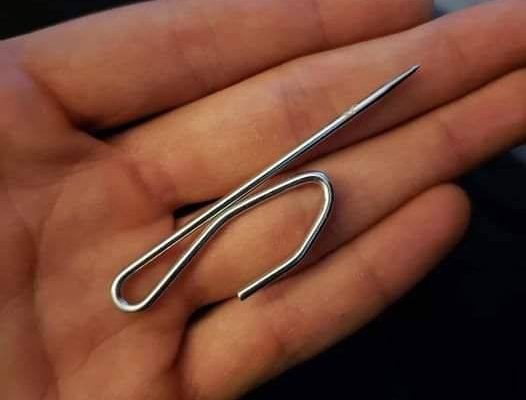In today’s world, where advanced tools and machines dominate every craft and trade, it’s easy to overlook the simple, manual tools that once played an essential role in everyday tasks. This small yet significant tool—a carpet needle—is a prime example. Holding it in one’s hand brings a sense of nostalgia, evoking images of traditional craftsmanship, precision, and attention to detail. While it may seem like just a thin metal needle with a looped end, it once held great importance in households and various trades.
Body: The carpet needle, also known as a tack lifter or sometimes referred to as a “bodkin,” was used predominantly in upholstery and carpet installation. Its strong, sharp point allowed users to pierce through thick fabrics, leathers, or even the dense backing of carpets. The looped or hooked end made it ideal for pulling threads, cords, or tacks through tight spaces, ensuring a secure fit. Unlike modern tools, this needle required skill and a steady hand, as even a slight miscalculation could damage the fabric or the material being worked on.
In addition to carpets, these needles were often used for other purposes such as leatherworking, basket weaving, and even bookbinding. Before the era of industrial machines, artisans relied on such tools to perform intricate, detailed work. They became a staple in the toolboxes of carpenters, upholsterers, and seamstresses. For households, having a carpet needle meant being able to tackle repairs on carpets, furniture, and other fabric items without needing to hire a professional.
ADVERTISEMENT
Interestingly, the design of this needle hasn’t changed much over the years, a testament to its functionality and effectiveness. Its simplicity is its strength, making it easy to carry around, store, and use whenever needed. In a way, the carpet needle represents a lost era of manual craftsmanship, where skills and patience were valued as much as the end product. It reminds us of a time when people were more resourceful, finding ways to maintain and repair their belongings rather than replacing them.
Conclusion: Though largely obsolete today, the carpet needle holds historical value and is a symbol of traditional craftsmanship. Its design, though simple, enabled countless tasks that required precision and patience. Reflecting on this tool reminds us of the importance of maintaining practical skills and appreciating the tools of the past. As we move further into a digital and automated age, the carpet needle stands as a small, yet significant reminder of human ingenuity and the beauty of hands-on work.



